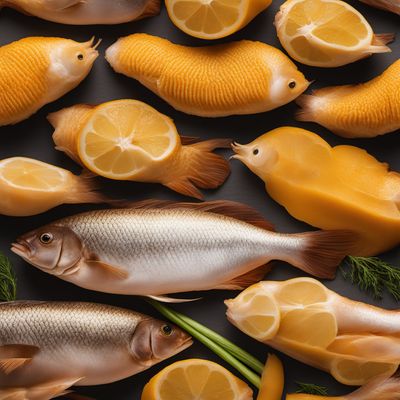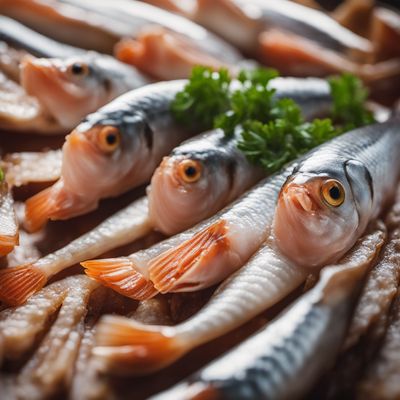
Ingredient
Miscellaneous pelagic marine fishes
The Ocean's Bounty: Exploring Miscellaneous Pelagic Marine Fishes
Miscellaneous pelagic marine fishes include species such as mackerel, sardines, herring, and anchovies. They are characterized by their streamlined bodies, silvery scales, and a strong, distinct flavor. The texture of these fishes varies from firm to tender, depending on the species. They are often used in various cuisines around the world due to their versatility and nutritional value.
Origins and history
The consumption of miscellaneous pelagic marine fishes dates back centuries, with evidence of their importance in ancient civilizations such as the Phoenicians and Romans. These fishes have been a staple in coastal communities and have played a significant role in the development of fishing industries worldwide.
Nutritional information
Miscellaneous pelagic marine fishes are an excellent source of omega-3 fatty acids, which are beneficial for heart health and brain function. They are also rich in protein, vitamins, and minerals. The calorie content varies depending on the species and preparation method.
Allergens
Some individuals may be allergic to certain species of miscellaneous pelagic marine fishes, such as anchovies or sardines. It is important to be cautious and consult with a healthcare professional if you have known fish allergies.
How to select
When selecting miscellaneous pelagic marine fishes, look for fish that have clear, bright eyes, shiny scales, and a fresh, oceanic smell. The flesh should be firm and resilient to the touch. If purchasing whole fish, ensure that the gills are bright red and free from slime or discoloration.
Storage recommendations
To maintain the freshness of miscellaneous pelagic marine fishes, store them in the refrigerator at temperatures below 40°F (4°C). If purchased whole, gut and clean the fish before storing. Consume within 1-2 days for optimal flavor and quality. Freezing is also an option for longer storage.
How to produce
Producing miscellaneous pelagic marine fishes on a small scale is not feasible for amateur individuals, as it requires specialized equipment, knowledge of fishing techniques, and adherence to sustainable fishing practices. It is best to support local fishermen and sustainable fishing initiatives when sourcing these fishes.
Preparation tips
Miscellaneous pelagic marine fishes can be prepared in various ways, including grilling, baking, frying, or pickling. They are commonly used in dishes such as fish tacos, ceviche, pasta sauces, and fish stews. They can also be canned or smoked for extended shelf life and unique flavor profiles.
Culinary uses
Miscellaneous pelagic marine fishes are widely used in cuisines around the world. Mackerel is popular in Japanese, Korean, and Scandinavian cuisines. Sardines are commonly enjoyed in Mediterranean and Portuguese dishes. Anchovies are used in Italian and Spanish cuisines, particularly in sauces and dressings.
Availability
Miscellaneous pelagic marine fishes are commonly available in coastal regions and areas with access to the open ocean. They can be found in fish markets, supermarkets, and specialty seafood stores. Availability may vary depending on the specific species and local fishing seasons.
More ingredients from this category » Browse all

Dolphinfishes
The Versatile Delight

Butterfish
"The Delicate Delight: Unveiling the Secrets of Butterfish"

Amberjack
The Versatile Ocean Delight

Garfish
The Sleek and Versatile Garfish

Pompanos
The Versatile Delicacy: Pompanos

Capelin
The Tiny Fish with Big Flavor: Exploring the Delights of Capelin

Mackerels, jack and horse mackerel, scads
The Flavorful and Nutrient-Rich Catch

Pomfret, Indo-Pacific
The Ocean's Delicacy

Bluefish
"The Bold and Flavorful Bluefish: A Seafood Delight"

Cobia
The Versatile Fish: Cobia

Horse jack
Equine Delicacy

Barracudas
The Fierce Predator of the Sea